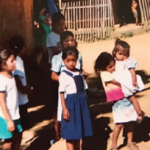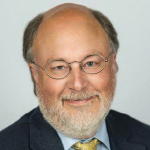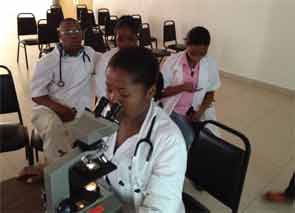

A desire to serve those in need, irrespective of ability to pay, is a common sentiment among physicians and one of the fundamental rewards in the practice of medicine. Achieving this goal in the U.S. is facilitated by a healthcare system that, despite its many flaws, usually enables a physician to care for these individuals.
A level of access to medical care comparable to that existing in the U.S. is not present in most countries designated as being in the third world, a term used to describe underdeveloped countries as defined by poverty level. The United Nations has recently chosen to use the term least developed countries, and it has listed 53 countries (38 in Africa, 14 in Asia and one in the Americas) in this category. A recent review of the current membership of the ACR revealed that, with the exception of two rheumatologists in Nairobi, Kenya, there are no rheumatologists listed in any of the 53 least developed countries, nor in the 50 lowest ranked countries in the world, ranked by either per capita income or life expectancy.
Within the past few months, I have had the opportunity to work as a volunteer physician in Haiti, the only country in the Americas listed in the least developed countries category. Based on this experience, I would like to address the questions: What is the potential role of a rheumatologist in an undeveloped country? What can realistically be accomplished by a rheumatologist working as a volunteer on a short-term basis?
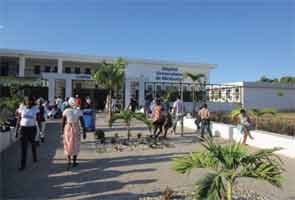
The Volunteer
Traditionally, the role of a volunteer physician in an underserved country has been limited to one of three areas:
- The provision of surgical care to permanently correct a condition. Examples would be total joint arthroplasty (e.g., Operation Walk) and plastic repair of cleft palates (e.g., Operation Smile);
- Interventions in the field of infectious disease involving epidemiology, diagnosis and treatment, both therapeutic and preventative; and
- Short-term relief programs, such as the Red Cross and Médecins Sans Frontières, which respond to catastrophic events, such as an earthquake or a war.
Volunteers are drawn to these activities because of the opportunity to provide an acute intervention with results that are often immediately obvious to those involved.
Few examples of an intervention by a volunteer physician group focusing on a chronic disease exist. One exception has been the treatment of HIV and multidrug-resistant tuberculosis by the organization Partners in Health (PIH). Both of these highly successful programs have included disparate populations in multiple countries, including Haiti, Rwanda, Peru, Russia, Lesotho and Malawi. The programs are based on a system of care that involved the local population and could be sustained after the volunteer left.
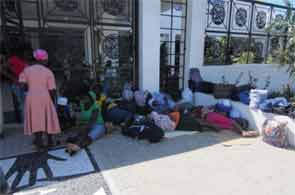
Invitation to Haiti
I was invited to work as a volunteer in Haiti at the newly constructed L’Hopital Universitaire Mirebalais (HUM). This institution was created by PIH with the support of the International Haitian Relief Fund. This fund is administered by the Haitian government and originated from donations by both foreign governments and nongovernmental organizations following the catastrophic earthquake of 2010. HUM was built in response to the need for both patient care and medical education in Haiti.
L’Hopital de L’Universite d’Etat D’Haiti, located in Port au Prince and previously the major teaching and referral hospital in Haiti, had essentially been destroyed by the earthquake. Mirebalais is situated on a high plateau about 60 km from the earthquake’s epicenter. Opened in March 2013, this 300-bed modern hospital provides care to a catchment area of more than 3 million Haitians. In October 2013, the first class of resident physicians arrived: five in internal medicine, five in pediatrics and four in general surgery. In addition, educational programs for nurse anesthetists, physical therapists, RNs, auxiliary nurses, aides and midwifes have been developed, and residency programs in emergency medicine and OB/GYN will be added in fall 2014.
A desire to serve those in need, irrespective of ability to pay, is a common sentiment among physicians.
One of the stated goals of PIH is to “provide educational opportunities that will build the knowledge and skill sets of the local caregivers so that they eventually will be able to care for patients without the need of foreign assistance.”
The hospital is operated by Haitian physicians and administrators. The fundamental role of volunteer physicians recruited by PIH from the U.S. is to serve as teachers. “Don’t fish; teach fishing” could be the program’s motto.
There are five medical schools in Haiti, graduating about 450 students per year, which, on a per capita basis, is comparable to the U.S. The six-year program, which begins after high school, focuses on lectures and textbooks while lacking strong programs in “bedside teaching.” Upon graduation, the new physicians serve a “social service” year in an assigned, unsupervised practice in the community. Haiti lacks a nationalized health service and spends less than $100 per person per year on healthcare. Less than half of the physicians take a residency, and 80% of Haitian physicians leave the country in the first five years. This is in part related to a combination of low pay, lack of available “paid positions” and general lack of support for medical care at all levels.
Several unique aspects to the field of rheumatology present challenges in an underdeveloped country:
- In a region where the major health problems are infectious diseases, infant mortality, malnutrition and traumatic injuries, concern regarding the rheumatic disorder is not in the forefront;
- Benefits related to treatment are not usually apparent until after several months of follow up, making it difficult to demonstrate the benefits of an intervention;
- Many of the most effective treatments in rheumatology, both medical and surgical, are prohibitively expensive in a country with an average daily per capita income of about $3;
- Many rheumatologic conditions are subtle in presentation and not always recognized by either the patient or the physician;
- A well-structured system of ambulatory care involving multiple disciplines, such as orthopedics, and the opportunity to provide long-term care are required; and
- It’s probable that neither the trainees nor the majority of the senior physicians have been previously exposed to either rheumatology or a rheumatologist.
Prior to arriving in Mirebalais, I was able to review the labs available and the formulary. Of significance, none of the following were available: polarized light microscopy, cultures of any kind, all rheumatologic serologies, CRP, ESR and MRIs. The formulary included only ibuprofen, prednisolone, depository methylprednisolone, IV dexamethasone and chloroquine with regard to medications used by rheumatologists. Specifically, neither methotrexate nor allopurinol was available. Although initially stunned, I soon realized the situation was not entirely dissimilar to what was available to me when I first became interested in rheumatology in the 1960s, and I had a Back to the Future moment.
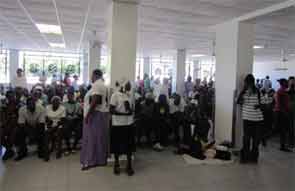
My Role
The unique opportunities inherent in bedside teaching are the ability to focus on techniques, clinical judgment and decision making, while creating a supportive personal relationship with the trainee. One must assume that facts can always be obtained in books. Although not viewed as a procedure-oriented specialty, rheumatology is highly dependent on both the skills of physical exam and history taking.
The ability to perform a thorough and accurate musculoskeletal and neurological exam is often absent in the best of U.S. medical graduates and seemed virtually absent in the Haitian medical residents. This was a major focus of my efforts and was taught in small groups to all the medicine and pediatric residents in addition to the primary care attendings, plus all of the physical therapy students. Lectures were given every day, focusing on history and physical exam, the use of those labs available in Mirebalais, the distinction between inflammatory and noninflammatory conditions, principles in the treatment of inflammatory conditions and a review of the more common clinical conditions. In addition, patients were examined in conjunction with both trainees and senior physicians in both the inpatient and outpatient venues.
Through the generosity of a colleague at the Brigham and Women’s Hospital in Boston, a polarized microscope was brought to Haiti and donated to the hospital. All of the lab technicians, in addition to the medical residents, were taught how to identify crystals. HUM is now, to the best of my knowledge, the only facility in Haiti capable of identifying crystals. It is anticipated that a microbiology lab will be up and running in the next few months, and cultures will then become available. Although serologies can be sent out, the additional cost may be prohibitive. The formulary was reviewed, and after discussions with the pharmacy and therapeutics committee, it is anticipated that both methotrexate and allopurinol will soon become available. These two agents were selected as a starting point in view of their relative low cost and high efficacy.
At the conclusion of my visit to Haiti, I made several observations, which attempt to answer the questions posed at the start of this article:
- The practice of rheumatology as it exists now in the U.S. has uncertain relevance to the least developed countries, and rheumatic disorders have a low priority in these regions;
- Short-term intervention by volunteer physicians, while effective in catastrophic and surgical care, is an irrelevant model for improving the care of patients with rheumatic disorders in these countries;
- The success of innovative, community-based, low-cost and sustaining programs in the treatment of both AIDS and multidrug-resistant tuberculosis gives one hope for the future in addressing other similar conditions;
- A comprehensive, multidisciplined and ambulatory-based program in the management of breast cancer has already begun at HUM. This could be a model for the future development of programs for the care of patients with rheumatic disorders or other similar conditions; and
- The education of healthcare providers in rheumatology with the initial focus being on physical exam and clinical decision making has potential in underdeveloped countries and is an area for possible growth and providing a meaningful role for volunteers.
The ACR’s Role
One has to ask: Should the ACR play a role in addressing the issues raised in this paper?
Currently, the educational programs of the ACR are appropriately focused on the needs of rheumatologists practicing in technically and economically advanced environments. I believe that efforts to train caregivers other than rheumatologists and to develop systems for the management of patients with rheumatic disorders in these underserved regions is worthy of consideration.
Ronald J. Anderson, MD, has been on the faculties of Harvard Medical School and the Brigham and Women’s Hospital in Boston since the early 1970s. He has taught countless medical students, residents and fellows about the field of rheumatology. In 2012 he was honored by the ACR as the initial recipient of the Distinguished Training Program Director Award.

